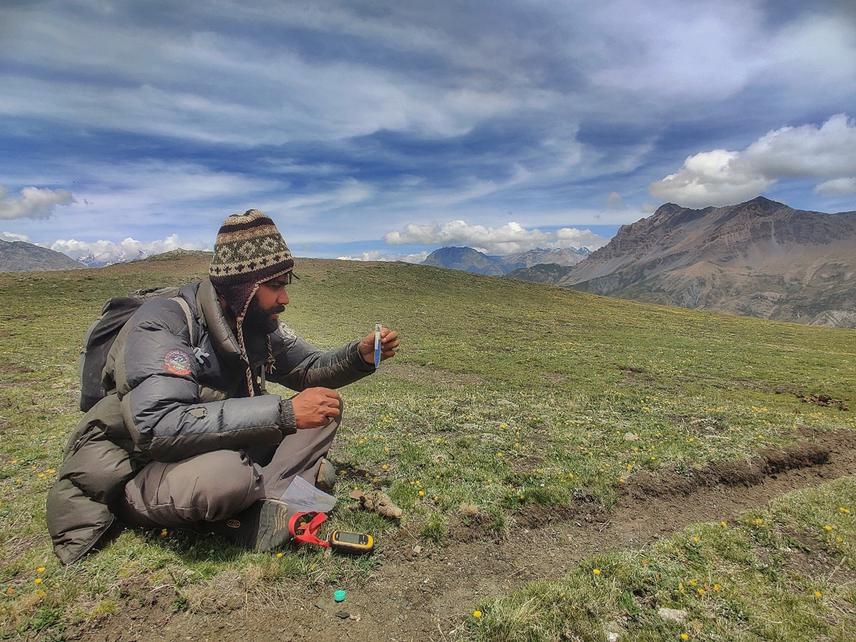Sandesh Lamichhane
Both Snow Leopards and Himalayan Wolves are coexisting in the Himalayan ecosystem sharing a common habitat and prey. As an apex predator, they regulate ecosystem health and resilience through trophic interactions with other herbivores and mesopredators. Beyond their ecological importance, they hold significant economic importance. Their charisma and beauty can be a good source of tourism, which can contribute to the local economy. However, despite their ecological and economic value, they possess conservation challenges due to human- carnivore conflict.
This project will identify key threats to snow leopards, Himalayan wolves, and their prey, as well as capacity building, community outreach, and education programs in Shey Phoksundo National Park (SPNP), Nepal. Conservation and awareness programs are urgently needed in Nepal's high-altitude areas. Thus, the goal of this project is to increase conservation and awareness activities in Shey Phoksundo National Park through community outreach and education programs, as well as to strengthen the capacity of local youths and communities to help conserve these sympatric carnivores. This will help with future conservation planning, promoting coexistence and reducing human carnivore conflicts.

I (Sandesh Lamichhane) investigate the scat of the Himalayan wolf in Shey Phoksundo National Park, Nepal. ©Bhumi Prakash Chaudhary Tharu.
High-altitude ranges often lack conservation and awareness programs due to their remote and inaccessible nature, harsh environmental conditions, and the complexity of their ecosystems. Although there are more than fifty percent of Protected Areas established in High altitudes, species-specific conservation programs are still lacking for the apex predators. As a result, people residing in such areas lack conservation awareness and possess significant threats.
The proposed project aims to systematically address the key threats faced by the snow leopard and Himalayan wolf populations from both the climatic and anthropogenic pressure in the SPNP of Nepal. Capacity building within the local communities will be a cornerstone of the project, achieved through training workshops where participants will learn to use GPS and camera traps for monitoring purposes. By involving locals, herders, and park game scouts as citizen scientists, the project aims to establish a sustainable approach to data collection and monitoring, ensuring long-term conservation efforts.
Thus, conservation and awareness programs are an urgent need in the high altitudes ranges in Nepal. Through this project we aim to promote conservation and awareness activities in SPNP through community outreach and education programs.
Header: A herd of Blue Sheep (Major prey of Snow Leopard) in Shey Phoksundo National Park, Nepal
©Sandesh Lamichhane.